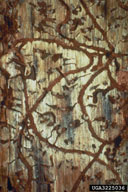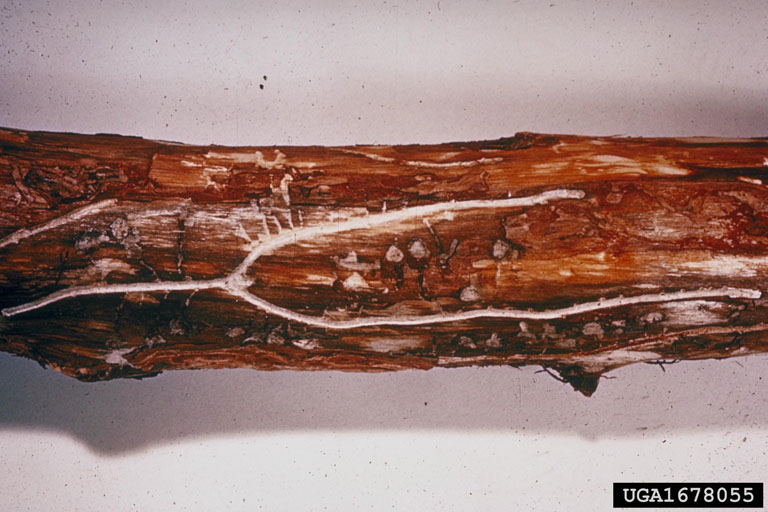|
The southern pine beetle has been a destructive pest for
well over a century now in the southeastern United States.
In 1750, Moravian settlers in the region described the destruction of
vast amounts of pine timber due to the “mischief” of these bark beetles.
These tiny cylindrical beetles, averaging 2 to 4 mm in length or roughly
the size of a grain of rice, are brownish to black in color with a broad head
and a well-developed mouth for voracious chewing.

The beetle begins life as an egg deposited in a winding
“S”-shaped gallery in the cambium layer, between the bark and the wood, of
the pine tree. In this gallery they
mature into adults. One life cycle
or generation of beetles from egg to adult may take anywhere from 26 to 54 days
depending upon the season. While
development of the beetle takes place throughout the year, it slows considerably
in the winter and explodes in the spring and summer as temperatures warm.
Below is a good picture of the beetle's S-shaped egg galleries.

Two other beetles attack stressed pine tress: Black Turpentine beetle and the
Ips beetle. There are characteristics that distinguish these two beetles
from the southern pine beetle. The black turpentine beetle is larger,
about 3/8 inch long and attacks pine trees within 2 feet of the ground.
The black turpentine beetle rarely is found in the tree above 10 feet off the
ground. Southern pine beetles occur throughout the bole and branches of the tree.
The resinous pitch tubes from black turpentine beetles are the size of a
half-dollar, larger than those of the southern pine beetle. The inner-bark
galleries of the Ips beetle distinguish it from the southern pine beetle.
The image below shows the H to Y-shaped galleries that are more vertical than
the S-shaped horizontal galleries of the southern pine beetle.

|